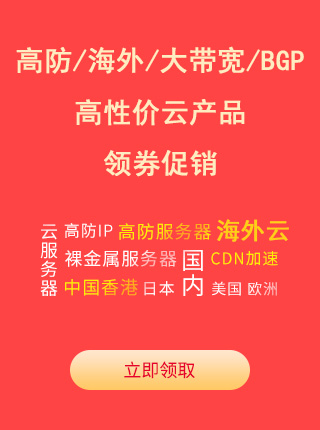用Python如何爬取图片和保存
Admin 2022-05-23 群英技术资讯 1001 次浏览
 这篇文章主要介绍了用Python如何爬取图片和保存相关知识,内容详细易懂,操作简单快捷,具有一定借鉴价值,相信大家阅读完这篇用Python如何爬取图片和保存文章都会有所收获,下面我们一起来看看吧。
这篇文章主要介绍了用Python如何爬取图片和保存相关知识,内容详细易懂,操作简单快捷,具有一定借鉴价值,相信大家阅读完这篇用Python如何爬取图片和保存文章都会有所收获,下面我们一起来看看吧。一、准备工作
用python来实现对百度图片的爬取并保存,以情绪图片为例,百度搜索可得到下图所示

f12打开源码

在此处可以看到这次我们要爬取的图片的基本信息是在img - scr中
二、代码实现
这次的爬取主要用了如下的第三方库
import re import time import requests from bs4 import BeautifulSoup import os
简单构思可以分为三个小部分
1.获取网页内容
2.解析网页
3.保存图片至相应位置
下面来看第一部分:获取网页内容
baseurl = 'https://cn.bing.com/images/search?q=%E6%83%85%E7%BB%AA%E5%9B%BE%E7%89%87&qpvt=%e6%83%85%e7%bb%aa%e5%9b%be%e7%89%87&form=IGRE&first=1&cw=418&ch=652&tsc=ImageBasicHover'
head = {
"User-Agent": "Mozilla/5.0 (Windows NT 10.0; Win64; x64) AppleWebKit/537.36 (KHTML, like Gecko) Chrome/92.0.4515.131 Safari/537.36 Edg/92.0.902.67"}
response = requests.get(baseurl, headers=head) # 获取网页信息
html = response.text # 将网页信息转化为text形式
是不是so easy
第二部分解析网页才是大头
来看代码
Img = re.compile(r'img.*src="(.*?)"') # 正则表达式匹配图片
soup = BeautifulSoup(html, "html.parser") # BeautifulSoup解析html
#i = 0 # 计数器初始值
data = [] # 存储图片超链接的列表
for item in soup.find_all('img', src=""): # soup.find_all对网页中的img—src进行迭代
item = str(item) # 转换为str类型
Picture = re.findall(Img, item) # 结合re正则表达式和BeautifulSoup, 仅返回超链接
for b in Picture:
data.append(b)
#i = i + 1
return data[-1]
# print(i)
这里就运用到了BeautifulSoup以及re正则表达式的相关知识,需要有一定的基础哦
下面就是第三部分:保存图片
for m in getdata(
baseurl='https://cn.bing.com/images/search?q=%E6%83%85%E7%BB%AA%E5%9B%BE%E7%89%87&qpvt=%e6%83%85%e7%bb%aa%e5%9b%be%e7%89%87&form=IGRE&first=1&cw=418&ch=652&tsc=ImageBasicHover'):
resp = requests.get(m) #获取网页信息
byte = resp.content # 转化为content二进制
print(os.getcwd()) # os库中输出当前的路径
i = i + 1 # 递增
# img_path = os.path.join(m)
with open("path{}.jpg".format(i), "wb") as f: # 文件写入
f.write(byte)
time.sleep(0.5) # 每隔0.5秒下载一张图片放入D://情绪图片测试
print("第{}张图片爬取成功!".format(i))
各行代码的解释已经给大家写在注释中啦,不明白的地方可以直接私信或评论哦~
下面是完整的代码
import re
import time
import requests
from bs4 import BeautifulSoup
import os
# m = 'https://tse2-mm.cn.bing.net/th/id/OIP-C.uihwmxDdgfK4FlCIXx-3jgHaPc?w=115&h=183&c=7&r=0&o=5&pid=1.7'
'''
resp = requests.get(m)
byte = resp.content
print(os.getcwd())
img_path = os.path.join(m)
'''
def main():
baseurl = 'https://cn.bing.com/images/search?q=%E6%83%85%E7%BB%AA%E5%9B%BE%E7%89%87&qpvt=%e6%83%85%e7%bb%aa%e5%9b%be%e7%89%87&form=IGRE&first=1&cw=418&ch=652&tsc=ImageBasicHover'
datalist = getdata(baseurl)
def getdata(baseurl):
Img = re.compile(r'img.*src="(.*?)"') # 正则表达式匹配图片
datalist = []
head = {
"User-Agent": "Mozilla/5.0 (Windows NT 10.0; Win64; x64) AppleWebKit/537.36 (KHTML, like Gecko) Chrome/92.0.4515.131 Safari/537.36 Edg/92.0.902.67"}
response = requests.get(baseurl, headers=head) # 获取网页信息
html = response.text # 将网页信息转化为text形式
soup = BeautifulSoup(html, "html.parser") # BeautifulSoup解析html
# i = 0 # 计数器初始值
data = [] # 存储图片超链接的列表
for item in soup.find_all('img', src=""): # soup.find_all对网页中的img—src进行迭代
item = str(item) # 转换为str类型
Picture = re.findall(Img, item) # 结合re正则表达式和BeautifulSoup, 仅返回超链接
for b in Picture: # 遍历列表,取最后一次结果
data.append(b)
# i = i + 1
datalist.append(data[-1])
return datalist # 返回一个包含超链接的新列表
# print(i)
'''
with open("img_path.jpg","wb") as f:
f.write(byte)
'''
if __name__ == '__main__':
os.chdir("D://情绪图片测试")
main()
i = 0 # 图片名递增
for m in getdata(
baseurl='https://cn.bing.com/images/search?q=%E6%83%85%E7%BB%AA%E5%9B%BE%E7%89%87&qpvt=%e6%83%85%e7%bb%aa%e5%9b%be%e7%89%87&form=IGRE&first=1&cw=418&ch=652&tsc=ImageBasicHover'):
resp = requests.get(m) #获取网页信息
byte = resp.content # 转化为content二进制
print(os.getcwd()) # os库中输出当前的路径
i = i + 1 # 递增
# img_path = os.path.join(m)
with open("path{}.jpg".format(i), "wb") as f: # 文件写入
f.write(byte)
time.sleep(0.5) # 每隔0.5秒下载一张图片放入D://情绪图片测试
print("第{}张图片爬取成功!".format(i))
最后的运行截图

三、总结
这篇关于“用Python如何爬取图片和保存”的文章就介绍到这了,更多相关的内容,欢迎关注群英网络,小编将为大家输出更多高质量的实用文章!

免责声明:本站发布的内容(图片、视频和文字)以原创、转载和分享为主,文章观点不代表本网站立场,如果涉及侵权请联系站长邮箱:mmqy2019@163.com进行举报,并提供相关证据,查实之后,将立刻删除涉嫌侵权内容。
猜你喜欢
-
Python怎样编写万花筒程序,过程是什么
这篇文章主要为大家介绍了python函数实例万花筒实现过程详解,有需要的朋友可以借鉴参考下,希望能够有所帮助,祝大家多多进步,早日升职加薪
-
Python中怎样定义类和创建对象
这篇文章主要为大家介绍了Python类和对象,具有一定的参考价值,感兴趣的小伙伴们可以参考一下,希望能够给你带来帮助<BR>
-
Python怎么实现日期转换为时间戳
我们可以用python里面的time模块mktime方法将转为unix时间戳,mktime函数只能接受相应时间的元祖序列。在此之前需要先将输入的时间转为元组序列:如果输入的时间为指定格式的,则可以用strptime()函数根据指定的格式把一个时间字符串解析为时间元组,time.strptime(string[,format])例如:time.strptime('2017-11-181
-
ajax与django交互的怎样实现?
ajax与django交互怎样实现?一些新手对于ajax与django的交互并不是很理解,下面小编就给大家介绍关于ajax与django交互的相关内容供大家参考学习,感兴趣的朋友们可以看看。
-
python周期置换密码过程是怎样,代码是什么
这篇文章主要为大家介绍了python密码学周期置换密码的学习,有需要的朋友可以借鉴参考下,希望能够有所帮助,祝大家多多进步,早日升职加薪
成为群英会员,开启智能安全云计算之旅
立即注册Copyright © QY Network Company Ltd. All Rights Reserved. 2003-2020 群英 版权所有
增值电信经营许可证 : B1.B2-20140078 粤ICP备09006778号 域名注册商资质 粤 D3.1-20240008





